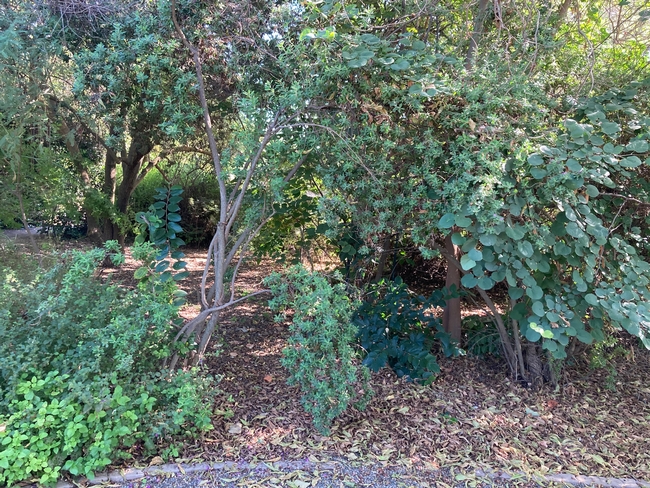The look of neighborhood yards has changed radically these last years. Landscape designs that feature highly-manicured, constantly trimmed, raked, and groomed lawns and planting beds are disappearing, by necessity. Traditional formal plantings (visualize rose beds inside boxwood hedges) are being replaced by drought and heat-tolerant California native and pollinator-friendly plants and trees better suited to our Central Valley climate and better able to survive extreme heat spikes as well as the high winds and heavy rainfall that come with atmospheric river 'bombs.'
Mulches are always recommended as covers for bare soil in the landscape for water conservation, soil temperature moderation and weed prevention, but the thinking on mulches is changing. Wood chip, straw and cedar shaving mulches are expensive and they release minor amounts of nutrients into the soil as they decompose. Leaf mulches from your own well-established trees or your neighbors' trees contain 50 to 80 percent of the nutrients the tree extracts from the air in a season.
The rapid composting method is one easy way to create leaf compost, but leaves that have not yet been composted can also be used as mulches. Leaves that fall from some deciduous large landscape trees (Japanese maples, liquid ambars, Chinese pistache) can actually be left intact to use as mulch underneath the trees. Lighter-weight leaves will break down fairly quickly during the fall and winter months.
Rake or spread the leaves to maintain an even depth of about two inches. Thicker layers of whole leaves can block water and oxygen as the leaves break down and become compacted. You can add more leaves as the leaf layer breaks down.
Leaves from evergreen broadleaf trees like Southern magnolia and California bay take longer to break down and should be shredded before being used as mulches. A three- to six-inch layer of shredded leaves is optimum underneath the trees' canopies.
Use a mulching mower to shred the leaves or a shredder. Shredders are now smaller, lighter and less expensive. The one-time cost of a shredder or mulching mower will soon recoup the repeated expense of buying mulches every planting season.
Shredded leaves can be used as a one-inch deep mulch layer on lawns. Spread the leaves thinly so that the grass blades show through. Add a two- to three-inch layer of shredded leaf mulch to cover your planting beds in winter, keeping the mulch a good four inches away from stems and trunks to prevent rot.
By spring the leaf mulch will have turned to nutrient-rich leaf mold that can be dug in as a soil amendment. Uncomposted leaf mulch will be host to many insects, insect eggs and pupae including butterflies, moths, spiders, ants and beetle species. Remember to leave some areas of bare unmulched soil in your garden to provide habitats for ground-nesting bees.
Leaves from trees that have had fungal problems (anthracnose, fireblight) or pest insect infestations (whiteflies, scale, aphids) should not be used as mulch. The wintertime decomposition process will not create enough heat to destroy fungal spores or pest insects and their eggs.
Sources:
www.familyhandyman.com/article/leaf-mulch
https://xerces.org/blog/midwinter-tasks-for-pollinator-gardening
